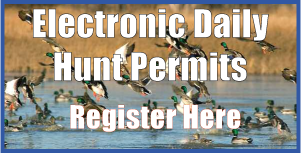Furharvesting
- Laser lights have been added to the list of illuminating devices which may be used for the taking of furbearers treed with the aid of dogs when paired with a .22 or .17 caliber rimfire handgun or rifle.
- The general furbearer open season will be extended by approximately 15 days; the 2022-2023 general furbearer open season will conclude on February 28, 2023.
- The otter season bag limit will be increased from five to 10 otters. On the Lower Neosho and Marais des Cygnes otter management units, the unit bag limit will increase from five to 10 otters. On the Verdigris and Missouri otter management units, the unit bag limit will increase from two to five otters.
With abundant furbearer populations throughout most of Kansas, furharvesting opportunities abound. In fact, furbearers are probably one of our most under-utilized natural resources, and the benefits of their harvest are numerous. Furharvesting during the legal seasons serves as the primary means of furbearer population and damage control. Regulated harvest also provides generally rural participants with fur, meat and income in an environmentally friendly manner. Furharvesting is often considered a recreational pursuit, but as with hunting, "recreation" does not adequately describe the cultural and social importance of furharvesting in the lifestyles of many participants. Perhaps most importantly, furharvesting helps propogate an appreciation and respect for a group of species that are associated by many people only with the problems they sometimes cause.
Species legally taken as furbearing animals in Kansas are badger, bobcat, beaver, gray fox, red fox, swift fox, mink, muskrat, opossum, otter, raccoon, striped skunk, and weasel.
2024-2025 Muskrat Study
The information in this Web site is a service to hunters. It has been prepared as a guide only. This is not a complete list of regulations. For more detailed legal information, contact the department's Law Enforcement Division. Complete regulations may also be viewed and printed online. Just click here.
LICENSES & FEES
A furharvester license is required to hunt, trap, or pursue (run) furbearers, or to sell their pelts unless exempt by Kansas law. A furharvester license is required to trap coyotes, and a hunting license is required to hunt them. The same license required to take coyotes is required to sell their pelts. Unlicensed, non-participating observers may accompany a licensed furharvester but may not assist in carrying or using equipment, controlling dogs, or otherwise assisting with furharvesting activities.
Persons under 16 years old may purchase a junior furharvester license at a discounted price.
Persons born on or after July 1, 1966 must complete the course before harvesting furbearers in the state on lands other than their own.
Furharvester: All Resident Furharvester Licenses can be purchased online or at any licensed agent.
- Resident Furharvester: $27.50
- Resident Junior Furharvester: $15.00
- Nonresident Furharvester: $252.50
Fur Dealer Permits and Lifetime may only be purchased at the Pratt Operations Office .
Resident Fur Dealer: $102.50
Nonresident Fur Dealer: $402.50
Lifetime Furharvester (Resident only): $502.50
Providing instruction concerning the ethical, safe and selective hunting, trapping and handling of furbearing animals and coyotes.
Persons born on or after July 1, 1966 must complete the course before harvesting furbearers in the state on lands other than their own.
The Kansas Furharvester Education course is offered in two formats: traditional instructor-led or online.
The instructor led course offers students a comprehensive manual, regulations, and advanced furharvesting publications. Note: A limited number of instructor led courses are offered throughout the year.
The no-cost online course replaces the formerly offered correspondence course. Students are required to work through a series of lessons teaching ethical and responsible furharvesting techniques, trap selection and maintenance and proper handling of harvested furbearers. Lessons discussing running hounds, hunting predators with and without hounds, field trials, night hunts and predator calling are also presented.
Quiz questions are presented throughout the course. Students must complete each lesson in sequence before being permitted to move to the next lesson or the final exam. Achieving a final exam score of 84% or better will result in receipt of the official furharvester education certificate of competency required by Kansas law and accepted by other states. You may take the final exam as often as needed to pass.
Click here to begin the Kansas Furharvester Education online course by creating your unique username and password which permit you to leave the course, come back to it at any time and pick up right where you left off.
As part of an effort to ensure the best traps are being used in trapping and furbearer management programs, trapping BMPs have been developed. BMPs are documents that identify techniques and traps that effectively address the welfare of trapped animals, while allowing for the efficient, selective, safe, and practical capture of furbearers. They are based on sound scientific studies of trap performance, and have been developed for each furbearer species in Kansas as a set of recommendations to be consulted by trappers and wildlife managers in the trap selection process. BMP’s are developed by the Furbearer Resources Technical Work Group of the International Association of Fish and Wildlife Agencies. For more information, visit http://furbearermanagement.com/ or contact the Emporia KDWP office.






































